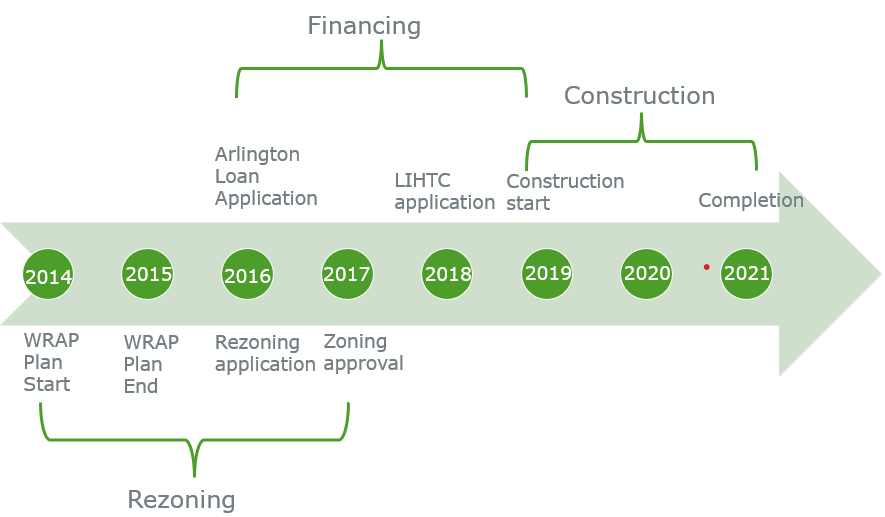This is the story of how 39 units of 1940s era housing became a modern 249-unit committed affordable apartment community in Rosslyn, a booming mixed-use district near the border with DC. In many ways, Queens Court represents the best of affordable housing development in Arlington County, one of the most prosperous localities in the DC metro area. Queens Court used many of the standard government financing programs typical of many modern US affordable housing ground up new construction projects. But due to its prime location and integration into a neighborhood-wide plan for growth, it’s a notable example of how to sustainably build affordable housing in urban infill locations.
Project Origins
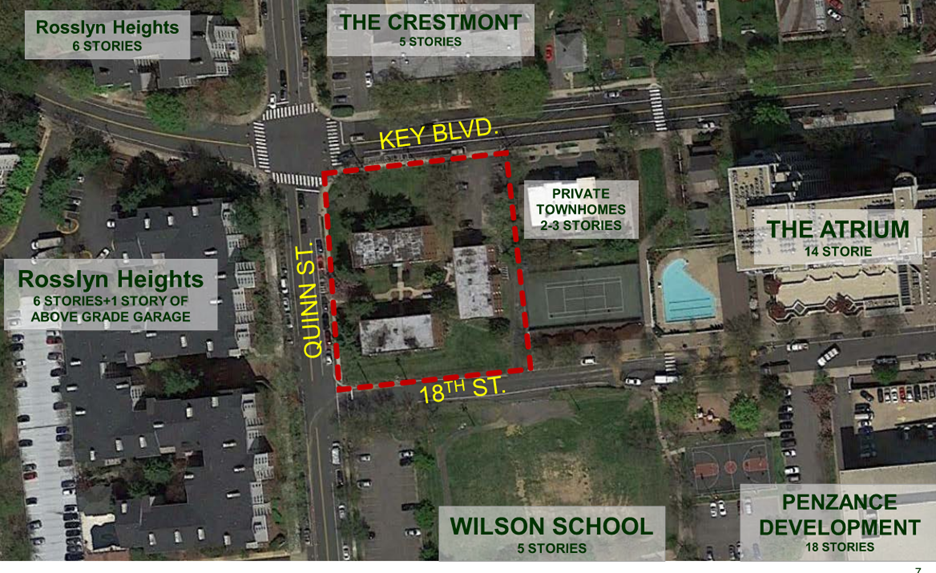
Originally built in 1941 as naturally affordable housing for a growing population of government workers, Queens Court was a small garden-style building consisting of 1-bedroom and studio apartments in the western part of the Rosslyn neighborhood of Arlington. By the late 20th century, the aging building was one of the last naturally affordable apartments in Rosslyn. In 1995, a nonprofit affordable housing organization, the Arlington Partnership for Affordable Housing (APAH), bought the site for $1.9M (aided in part by Arlington County loan funds) and committed the apartments to affordable rents for the indefinite future. This purchase was nearly 8 times less than the assessed value two decades later, making this a great investment for both the nonprofit and Arlington County looking to multiply affordable housing in a competitive real estate market. By the 2010s, Rosslyn had become a booming neighborhood in the transit-rich Rosslyn-Ballston corridor in Arlington, the primary area of Arlington’s growth for much of the past 50 years. With its prime location with easy access to Washington, DC and dozens of walkable transit connections, it made sense to redevelop the site into more affordable housing for a growing population.

Rezoning for Growth
From the perspective of an affordable housing developer, any redevelopment would require relocating the existing tenants of the building. This is a sensitive and expensive undertaking that is only worthwhile if zoning allows for enough additional housing to justify the hardships. Unfortunately, the site’s RA6-15 zoning designation only allowed for marginal increased density, and so a rezoning was needed. Thankfully, there was a willing and supportive local government. Arlington took a holistic planning approach to not only rezoning the Queens Court site, but also the surrounding neighborhood in a plan known as the Western Area Rosslyn Plan (WRAP).
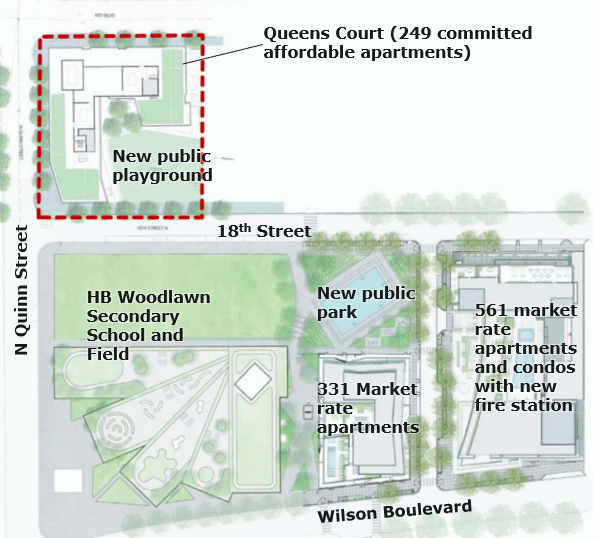
This plan was a neighborhood-wide plan for growth aimed at allowing new private development while at the same time upgrading public facilities in the area with a new expanded fire station, school, and park. The final plan also included over 800 units of new market rate housing, and, what is now a new CVS and Foxtrot grocery. The replanning process lasted from June 2014-July 2015, consisting of a dozen or so community meetings followed by a County Board vote focused on not whether, but how to plan for growth. It’s a great example of how city planning, when directed towards upgrading public facilities to accommodate growth rather than preserving community character, can be a catalyst for positive neighborhood transformation. After the passage of the plan, Queens Court went through another 1 ½ year site-specific zoning change to allow up to 12 stories and 6.0 FAR on the site. In exchange, the county pushed to have a portion of the Queens Court site (about 9,000 square feet in total) dedicated as a publicly-accessible playground for new community park.

Design and Unit Mix
The building footprint was designed to wrap around the new playground in the southeastern corner of the site, featuring double-loaded corridors with lots of community spaces on the ground and 12th floors. The unit mix intentionally features many 2 and 3-bedroom units to house more families, which also helped the project score well for local and state subsidized funding. The units are mostly all income and rent restricted at 60% of the area median income (AMI) to qualify for low-income housing tax credit (LIHTC) financing. There are two levels of parking in total with a 0.6 parking ratio as well as 100 bike parking spaces in the garage level.
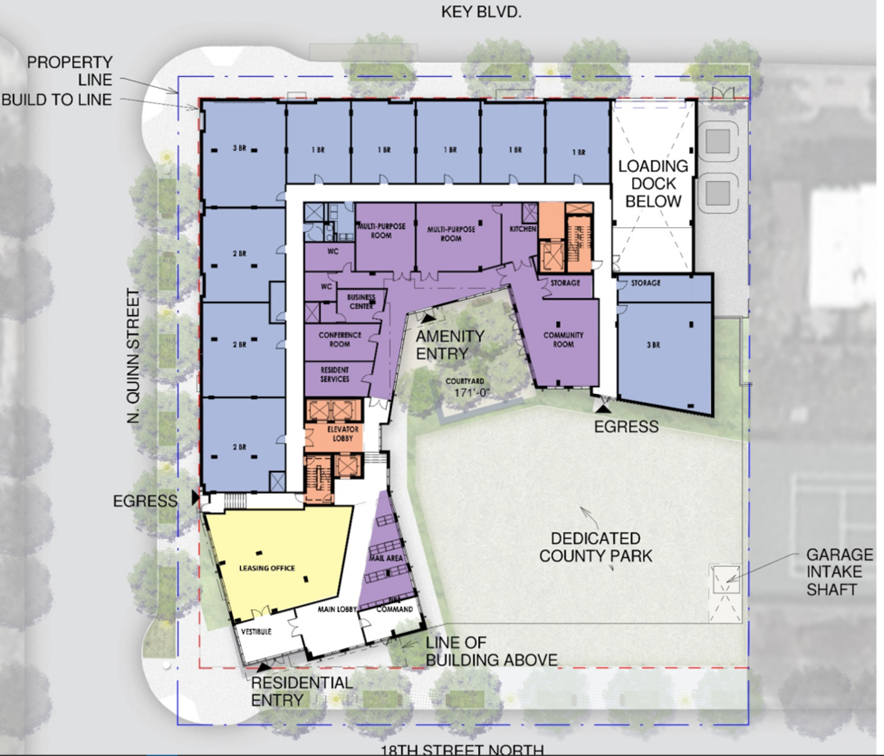
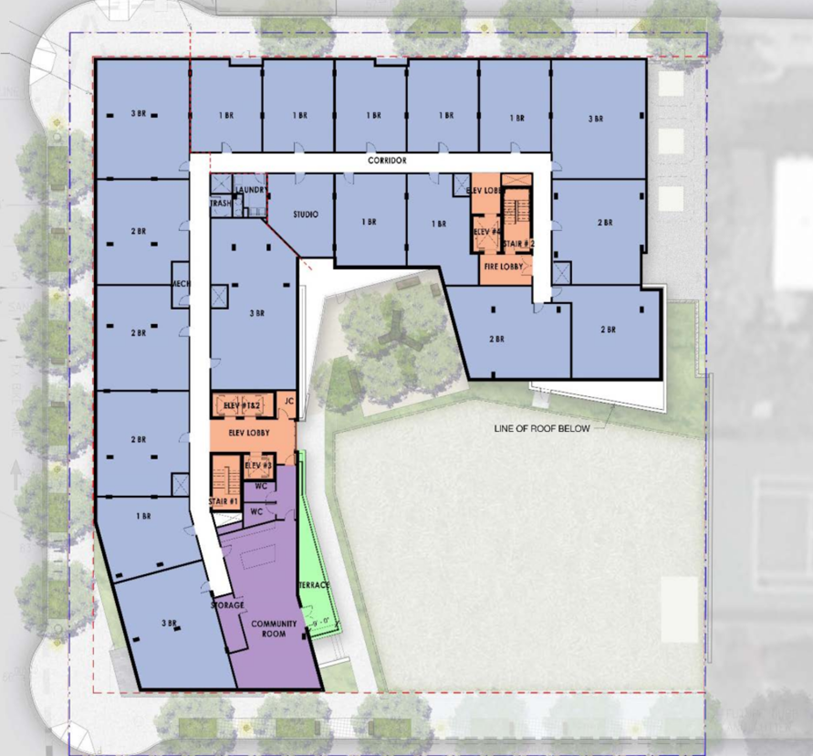
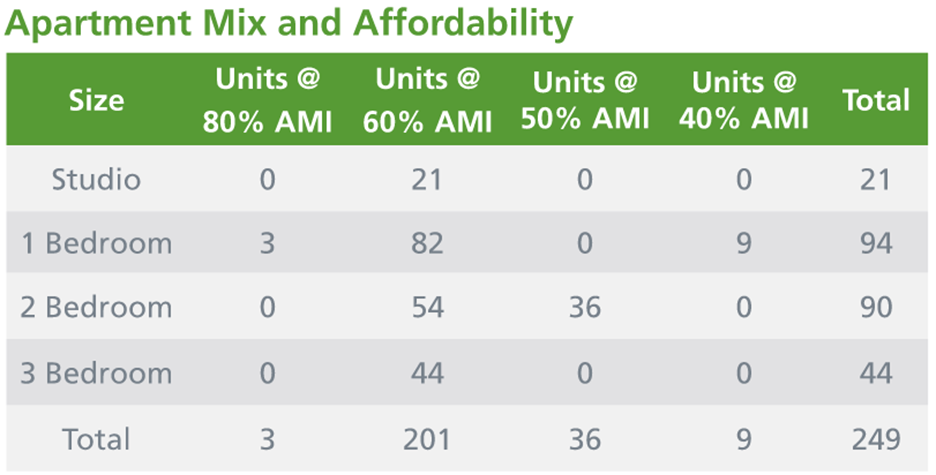
Financing and Construction
The total development costs for the project totaled $415,755/unit, although this includes the land acquisition price ($62,008/unit), which was reinvested by the developer (who previously owned the land) into the project as a sponsor loan. Netting out this acquisition price, the true total development costs decreases to about $353,747/unit, well below the costs of similarly sized multifamily projects in today’s metro DC market. This is a credit to the foresight of purchasing this land at a discount 20 years earlier.
The structure of the building was built with concrete (Type 1A) with brick and fiber cement cladding. The public park lies on top of the concrete parking garage, and build-out of the park itself was managed separately by the county.
To pay for these costs, Queens Court used a combination of commercial loans ($28M), low-income housing tax credit equity (LIHTC), and low-interest Arlington County loan funds, a standard combination of sources for subsidized committed affordable housing projects.
Queens Court Redevelopment Sources and Uses


As part of the site’s rezoning, Arlington County also required extensive infrastructure upgrades around the site. Most of these requirements (known as site plan 4.1 regulations per the administrative code section) are standard for any multifamily projects that seek zoning changes. These are generally positive investments that help improve the site infrastructure, but they are also expensive requirements that added several hundred thousand dollars’ worth of cost to the project.
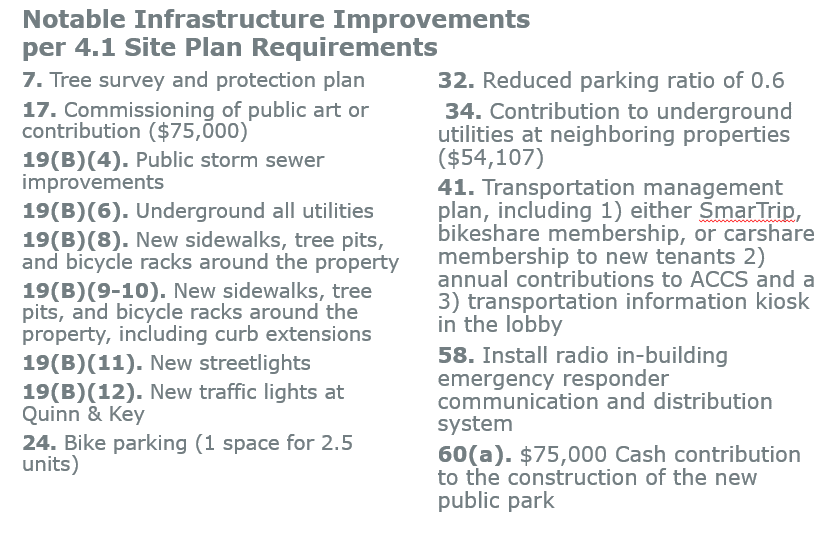
Final Thoughts
Overall, Queens Court highlights many of the best parts of the county’s commitment to growing housing and infrastructure in its transit corridors. By focusing staff resources on targeted public investments to accommodate new housing, Arlington was able to welcome more than 200 new moderate income residents into a revitalized western Rosslyn neighborhood. And with its long-running affordable housing loan program, the county was also able to work with a developer to purchase this prime site in the mid-90s for nearly 8 times less than what it was worth two decades later. This set up the project well for a cost-effective redevelopment when the area boomed two decades later.
